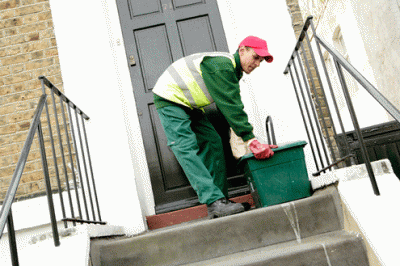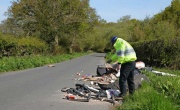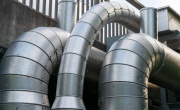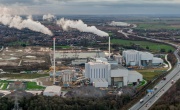Rejected recycling figure leads to calls for quality recycling
Issues of recycling quality have hit the headlines today, following revelations that the amount of recycling rejected in England has increased by 84 per cent in the last four years.
The statistic was revealed by the Department for Environment, Food & Rural Affairs (Defra) following a freedom of information request made by BBC Breakfast in November 2015.
Defra’s response to the request, which referred to the local authority (LA) collected waste statistics, showed that 338,000 tonnes of recyclable waste were rejected in 2014/15, a figure that had increased dramatically from 184,000 tonnes in 2011/12.
The most common disposal methods of the rejected waste were incineration and landfill, which together were used to deal with 97 per cent, or 270,000 tonnes, of waste in 2013/14. Despite the increase in rejections, however, total recycling rose from 10.7 million tonnes in 2011/12 to 11 million tonnes in 2014/15.
The news comes after changes were introduced to reporting regimes to increase transparency of the activities of materials recycling facilities (MRFs) in an effort to drive up recycling quality.
Since amendments to the Environmental Permitting (England and Wales) Regulations came into effect in October 2014, operators of MRFs processing more than 1,000 tonnes of material per annum are required to test the composition of samples taken from material they put into the sorting process, as well as the useable output.
Adherence to the sampling and reporting regime has been patchy, however, with the Waste & Resources Action Programme (WRAP) reporting that the amount of materials facilities (MF) reporting figures on tonnages received from suppliers and outgoing tonnages is dropping from a low initial figure.
Worst performers have co-mingled collections
According to the figures released today, Kirklees Council in West Yorkshire is the English LA with the highest recyclate rejection rate at 14.99 per cent, significantly above the national average of three per cent.

Kirklees Council operates a co-mingled recycling collection where paper, cardboard, plastic, drinks and food cans and aerosols are all collected in the same green bin. Glass is not included.
According to the council website, contamination stickers are used when recycling is rejected. One reason for rejection was stated as the presence of bulky items capable of damaging the MRF, where equipment can be expensive to fix.
Glass, which is not included in recycling collections, is often rejected as it is potentially dangerous to sorters and the contamination with waste such as garden or food waste means the recyclate is unable to be processed.
Explaining the area’s high rejection rate to the BBC, a spokesman for the council said that a ‘substantial quantity’ of its recyclate had been taken to a separate plant for processing “which has a low tolerance for contamination, and meant that an entire load of waste could be rejected”.
A similar collection system is in place in Greenwich in South East London, which in 2014/15 had a reported 14.4 per cent rejection rate of recyclable material, despite a council spokesperson claiming it took a “a proactive approach on this issue through engaging with residents, businesses, managing agents and landlords”.
In Greenwich, red tags are placed on bins to highlight the presence of unsuitable materials. The council explained the particularly high rate of rejection in the area by noting that its contractor had been using out-of-date equipment to process material, though is no longer doing so, adding that the council has seen an increase in the number of new flats to the area, which usually results in a higher level of contamination.
Hull City Council was also shown to have a high rejection rate, with 14.2 per cent of Hull’s recyclable waste being rejected in 2014/15. This council also has a co-mingled system and places tags on bins containing any sort of contamination.
Calls for harmonisation and kerbside-sort systems
The Local Government Association told the BBC that the figures should be put down to “widespread confusion over what can and cannot be recycled”, due to variations in collection systems, and Defra has today vowed to continue work on its collection system harmonisation project.
Campaigners for quality recycling, however, have said that focus should not be on householder confusion. Speaking to Resource, Andy Moore, Campaigner for UK Recyclate, said that the “collection system is at fault”, adding: “These new statistics are worrying, but don’t show anything like the whole story.
“Systems which collect the recyclable material co-mingled and then attempt to sort it mechanically produce inferior quality materials and reject much more than systems which collect recyclables separately. The best systems comply with the EU Waste Framework Directive and the Waste Regulations. These require that paper, glass, metals and plastic are collected separately. Many local authorities, especially those in the West of England and Wales deliver just such a service. Work by Welsh Government and WRAP has shown that separate collection is optimal financially as well as environmentally. It is the method that Defra itself recommends.”
Moore went on to criticise the “lack of political will” to enforce the separate collection requirement of the Waste Regulations and to highlight other problems that result from poor collection systems (and that are potentially masked by the figures), including the export of low-grade materials to the Far East and the increasing export of contaminated material as refuse-derived fuel, concluding: “With the exception of a few places, such as Somerset, there is a huge disconnect in information between the householder and the fates of materials. Local authorities would do best to start by addressing that if they want to improve partnerships with the householder.”
“Unrealistic recycling targets divorced from the reality of the market”
Other members of the recycling industry have also reacted to today’s figures, with Sam Corp, Head of Regulation at the Environmental Services Association (ESA), putting a more positive spin on the news, saying: “Contamination of recyclates costs local authorities, and therefore the taxpayer, money and wastes valuable resources that could be recycled. Local authorities and waste companies are working with householders to address this issue, but it is important to keep in context that 338,000 tonnes represents less than 3.5 per cent of the amount of household waste collected for recycling…
“However, this increase in contamination does still highlight the need for a long-term framework from the government to help drive recycling and reuse, and reduce the levels of contamination that have been shown in these figures.”
More information about the legal requirements for collection systems in England is available in Resource’s previous article.






